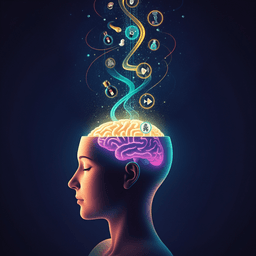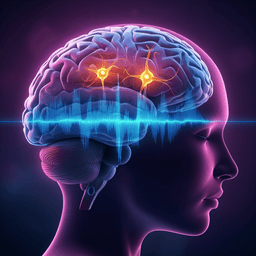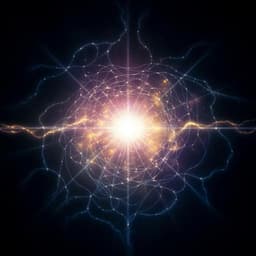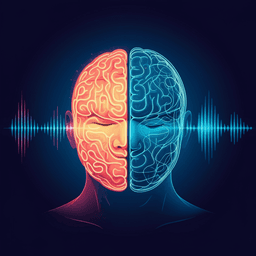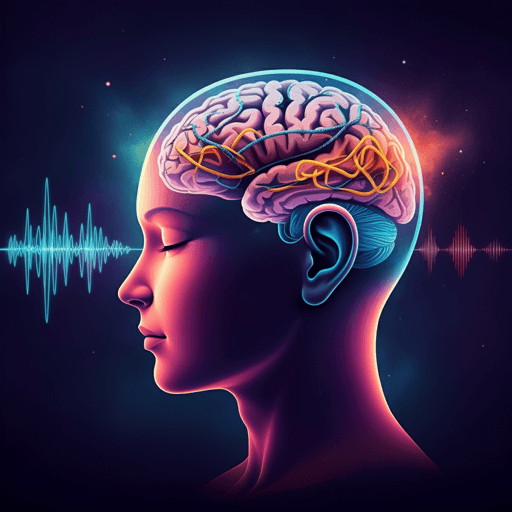
Psychology
Targeted memory reactivation during sleep improves emotional memory modulation following imagery rescripting
D. Recher, J. Rohde, et al.
Targeted Memory Reactivation (TMR) during NREM sleep amplified the benefits of imagery rescripting (ImR): cued autobiographical memories became less vivid, distressing, and arousing in a home-based wearable-EEG study. Research conducted by Authors present in <Authors> tag.
~3 min • Beginner • English
Introduction
Aversive emotional memories are central across disorders like PTSD, anxiety, and depression and contribute to intrusive imagery and maladaptive schemas. Cognitive-behavioral treatments aim to update and modulate such memories; imagery rescripting (ImR) is a well-established technique that retrieves a consolidated memory, induces a labile state, and integrates adaptive information before reconsolidation. Theoretical accounts (active systems consolidation) posit that reconsolidation preferentially occurs offline during sleep via spontaneous reactivation during NREM slow waves, integrating updated traces into neocortical networks. Targeted Memory Reactivation (TMR) presents sensory cues linked to prior learning during sleep to bias reactivation toward specific memories. While meta-analytic evidence supports TMR benefits for declarative and procedural memories, emotional memory findings are mixed. This study tested whether ambulatory TMR during NREM sleep following a single-session ImR of socially aversive autobiographical memories yields additional improvements in key memory characteristics compared to neutral or no cueing. The primary hypothesis predicted greater post-ImR improvements in the experimental group receiving idiosyncratic ImR-word cues during sleep. Exploratory analyses examined dose effects (two vs. five cueing nights).
Literature Review
Prior research indicates sleep-dependent consolidation supports integration of updated memory traces via reactivation during NREM slow waves. Meta-analytic work shows TMR during N2/N3 enhances memory across domains, yet emotional memory results are inconsistent, with studies reporting modulation of conditioned fear, changes in interpretation of ambiguous scenes, and enhancements of adaptive learning and schema updating, alongside several null findings. Clinical translation attempts using TMR to augment exposure therapy showed no added benefit, potentially due to ceiling effects, short nap durations, or cueing during REM rather than NREM. Theoretical models suggest emotional and motivational tagging increase likelihood of offline reactivation, and that consolidation unfolds over multiple nights, implicating both NREM and potentially REM sequences. This study extends prior work by using highly idiosyncratic cues derived from an updated autobiographical memory after ImR, delivered ambulatory during NREM sleep across multiple nights.
Methodology
Design: Double-blind randomized controlled trial, pre-registered, with ethical approval. Participants (n=80; healthy young adults with socially aversive, non-traumatic autobiographical memories still causing distress) were randomized to four groups: EG-1 (n=22), EG-2 (n=18), CG-1 (n=20), CG-2 (n=20). The 5-week protocol included two habituation nights with a wearable EEG (MHSL-SB), a single ImR intervention (evening of day 1), two experimental nights (EN-1, EN-2) with group-specific cueing, and follow-ups at 1 week and 1 month. EG-1 completed three additional cueing nights (total five ImR-cueing nights), EG-2 completed three additional sham EEG nights without cueing; CG groups had no additional nights.
Imagery Rescripting (ImR): Standard clinical protocol adapted from Wild & Clark. Steps included cognitive restructuring of the distressing belief, reliving the event from the younger self’s perspective, observation by the current self, and intervention by the current self to support and confront perpetrators, integrating new insights. A positive closing image captured the most meaningful changes (emotions, cognitions, sensations, behaviors). Sessions were delivered by trained master’s students and supervised; sessions were audiotaped.
Cue selection and recording: After ImR, two lists of 10 words were prepared: (1) idiosyncratic words representing the updated emotional memory (e.g., “hug,” “soothe,” “I’m okay,” “calm,” “happy”), primarily from the positive closing image and phase three; (2) neutral autobiographical memory words (e.g., breakfast routine descriptors). Participants refined and finalized the 10 most representative words per memory. Cues were recorded in the experimenter’s voice and amplitude-normalized.
Wearable EEG and TMR protocol: The MHSL-SB recorded EEG (Fpz-A2) with EOG and EMG for post-processing. Real-time algorithms detected NREM sleep with slow waves (SWs) and low beta power; when conditions were met, auditory word cues (50 dB SPL initial volume) were delivered with a 3.5 s inter-stimulus interval in a pseudo-randomized order. Volume was adaptively reduced upon signs of arousal. Cueing was not phase-locked to specific SW phases. EG groups received ImR-word cues during SW-rich NREM in the first two experimental nights; CG-1 received no cues and CG-2 received neutral-word cues.
Measures:
- Primary outcomes: Script-driven imagery assessments of the emotional memory at t1 (pre-ImR), t2 (post-ImR), t3 (post EN-1), t4 (post EN-2), t5 (1-week FU), t6 (1-month FU). Characteristics rated 1–10: positive valence, negative valence, arousal, vividness. Emotional distress assessed via an 11-emotion inventory (sum 11–110). Data were complete except one missing t3 in CG-2.
- Secondary outcomes: Distress associated with the most distressing negative belief (1–10); daily-life intrusion diary via smartphone app for 7 days pre- and 7 days post-ImR; heart rate (HR) via Empatica E4 during in-lab assessments (t1, t2, t5), with HR change scores derived from emotional minus neutral imagery intervals.
Sleep scoring and validation: Automatic sleep stage scoring via a deep learning classifier; validation against manual scoring in 10 nights showed adequate agreement (Cohen’s kappa=0.68). Event-related potentials confirmed cue delivery effectiveness in cued groups.
Statistical analysis: R 4.0.2 used. Transformations applied where needed. Two-level multivariate multilevel models with occasions (Level 1) nested within participants (Level 2) estimated trajectories for each primary outcome and negative belief distress. Pre-registered multivariate contrast analysis tested eight hypothesized contrasts across groups and timepoints (e.g., ImR main effect, EG vs CG post-ImR trajectories, dose effects in EG-1 vs EG-2). A control variable indicated whether participants reported hearing cues; experimenter effects were tested. Exploratory analyses probed associations between number of cues and outcomes.
Key Findings
- ImR main effects (t1 to t2): Large improvements across memory characteristics: negative valence (d=1.64; p<0.001), emotional distress (d=1.66; p<0.001), arousal (d=1.23; p<0.001), vividness (d=0.76; p<0.001); positive valence increased (d=0.86; p<0.001). Distress related to the negative belief decreased (d=0.85; p<0.001). HR was higher during emotional vs neutral imagery at baseline (M=76.35 vs 72.39 bpm; p=0.03).
- TMR additional effects post-ImR: In the experimental group (ImR-word cueing), further decreases occurred from t2 to t3–t6 in arousal (b=−0.03; p=0.006), emotional distress (b=−0.03; p<0.001), and vividness (b=−0.09; p=0.008). No additional changes in these measures were observed in control groups (neutral-word cueing or no cueing). No TMR effects on positive or negative valence, nor on negative-belief distress.
- Dose-response: EG-1 (five cueing nights) showed additional vividness reduction from t4 to t5–t6 (b=−0.26; p=0.003) compared to EG-2 (additional sham nights) which showed no further changes.
- Sleep and cueing: On average, 248 words were played per night (SD=128; range 15–596), with 92% during NREM (N2=78.34%; N3/SWS=13.92%). No differences in sleep architecture across groups and no TMR effects on HR. 32% reported hearing cues; inclusion/exclusion of this control variable did not alter results. ERPs confirmed cue delivery effectiveness in cued groups.
Discussion
Findings demonstrate that a single-session ImR substantially reduces distressing characteristics of socially aversive autobiographical memories. Applying ambulatory TMR during NREM sleep using idiosyncratic ImR-derived word cues provided additional benefits beyond ImR alone, specifically further reductions in vividness, arousal, and emotional distress, with maintenance of improvements at 1 week and 1 month. A dose effect for vividness suggests more nights of cueing may enhance reconsolidation-related integration of updated memory content. These results support the hypothesis that TMR can bias offline reactivation toward the adaptively updated memory trace and facilitate its stabilization and contextualization within autobiographical memory networks. The absence of effects on valence measures may indicate TMR preferentially targets sensory-perceptual and affective intensity aspects rather than evaluative components. The ambulatory design illustrates feasibility of home-based, multi-night TMR to augment psychotherapy-derived memory updates, offering potential for personalized and scalable interventions.
Conclusion
This double-blind RCT shows that TMR during SW-rich NREM sleep can augment the benefits of imagery rescripting on autobiographical emotional memories, yielding additional reductions in vividness, arousal, and emotional distress, with evidence for dose-dependent enhancement in vividness. TMR via wearable EEG is feasible at home and did not adversely affect sleep architecture. These findings suggest a translational path to integrate personalized cueing into psychotherapeutic protocols to strengthen memory updating and reconsolidation across multiple nights. Future research should test clinical populations (e.g., PTSD), optimize cue timing and sleep-stage targeting, include additional control conditions (e.g., reactivation without ImR), and develop neurobehavioral measures to directly track updating versus original memory traces.
Limitations
- Sample comprised young, healthy sleepers with socially aversive but non-traumatic memories; generalizability to clinical populations (PTSD, anxiety, sleep disorders) requires testing.
- No group receiving TMR reactivation without ImR; cannot rule out benefits from reactivating distressing memories alone.
- A portion of participants (32%) heard cues; although hearing did not affect outcomes, subliminal presentation was not guaranteed.
- Potential microstructural sleep changes (e.g., arousals) due to cues were not assessed; only macro-architecture showed no effects.
- Cueing was not phase-locked to slow-wave up-states and primarily occurred during N2; optimal timing and deeper N3/SWS targeting may yield stronger effects.
- Exploratory analyses found no association between number of cues and outcomes; dose effects were observed at the level of nights, not cue count.
Related Publications
Explore these studies to deepen your understanding of the subject.



